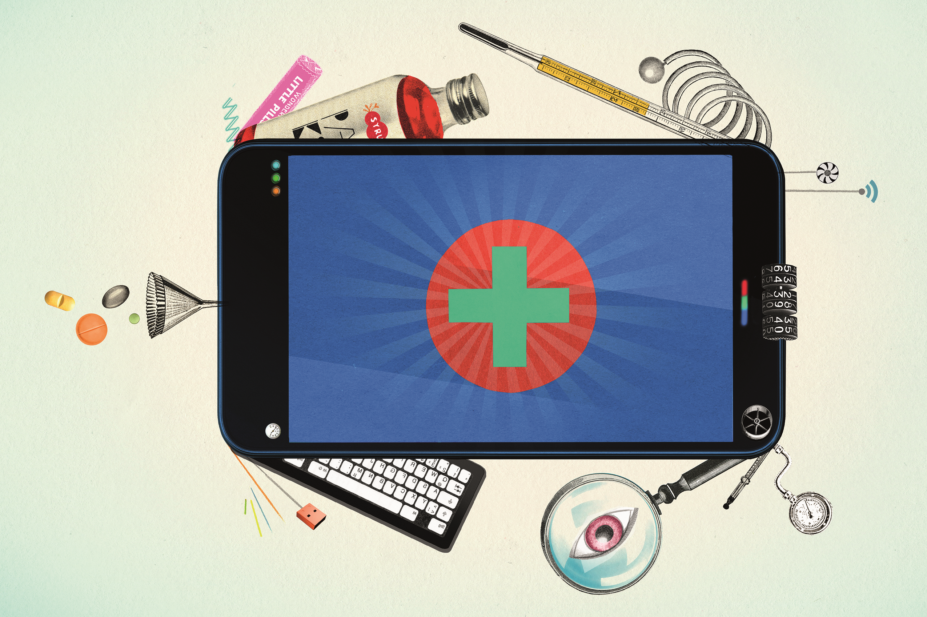
Valero Doval / Ikon Images
The area covered by NHS Highland is roughly the size of Belgium, stretching from the small coastal village of John O’Groats down to the wild beauty of the Mull of Kintyre. Rural and, in many places, remote from conventional NHS services, it can be difficult to offer a pharmacy service to GP practices across such large distances. Pharmacists are often based two — sometimes three — hours’ drive away. But with a bit of creative thinking and some innovative technology, a solution is emerging. Clare Morrison, lead pharmacist for the most northerly region, and her team have introduced two forms of telehealth through the ‘Pharmacy Anywhere’ project, which started in 2017 at three dispensing practices in the Highlands following an ‘Innovating for improvement’ funding award from the Health Foundation.
‘Vision Anywhere’ is an app that gives healthcare professionals remote access to patients’ medical records. Records are protected with industry-standard encryption and are automatically removed from the pharmacist’s mobile device after 72 hours. ‘Attend Anywhere’ is a web-based video consulting system that enables patients to have a consultation at home using an internet-connected computer or smartphone.
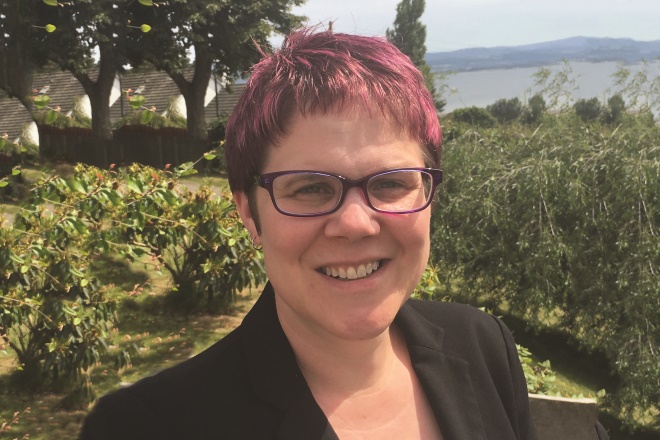
Source: Courtesy of Clare Morrison
Clare Morrison, lead pharmacist for NHS Highland, says that providing a pharmacy service to GP practices remotely is sustainable and cost-effective
“Previously, the pharmacist would have to wait until they visited the practice to respond to referrals — that could be a week or two weeks away, depending on where they were in their cycle of driving round,” explains Morrison.
Now they can get a referral and deal with it immediately. It’s meant we can be much more responsive — and that adds to our strength as a profession
“Now they can get a referral and deal with it immediately. It’s meant we can be much more responsive — and that adds to our strength as a profession.”
GP practice staff identify patients who are due for a medication review and make them an appointment. Meanwhile, the pharmacist uses Vision Anywhere to access the patient’s medical notes, blood test results and clinic letters. At the scheduled appointment time, the patient logs on to Attend Anywhere; the pharmacist sees the patient appear in the virtual waiting room and connects the video call (although, in the Pharmacy Anywhere project, most consultations were done using the telephone as a result of low bandwidth or patient preference).
At the end of the consultation, the pharmacist updates the patient’s medical record, makes any necessary changes to their medicines and transmits the information back to the GP practice server.
The pharmacists, who are all independent prescribers, follow guidance issued by the General Medical Council on remote prescribing[1]
. Where a repeat prescription is amended or re-authorised, the prescribing decision is entered by the pharmacist in the patient’s medical record. Prescriptions are ordered via the usual process, printed at the practice and signed by the GP. When a new prescription is required immediately, the pharmacist creates it and sends a message to the patient’s GP, who checks it, prints it on their own prescription paper and signs it.
Over the course of the pilot, which ran from January 2017 to April 2018, 388 patients were offered a Pharmacy Anywhere appointment: 331 patients accepted (57 patients declined, either because they did not want a medication review or they did not want it to be provided remotely) and there was a 94% success rate (19 technical failures). Video consultations were used for just 14 appointments; the rest were conducted over the telephone. Most consultations involved some sort of intervention — advice offered, a prescription amended or re-authorised, or a suggestion made to the patient’s GP.
Yvonne MacRae, a specialist clinical pharmacist at NHS Highland, provided a small number of video consultations during the project’s evaluation phase and found little difference from consultations where she is physically present.
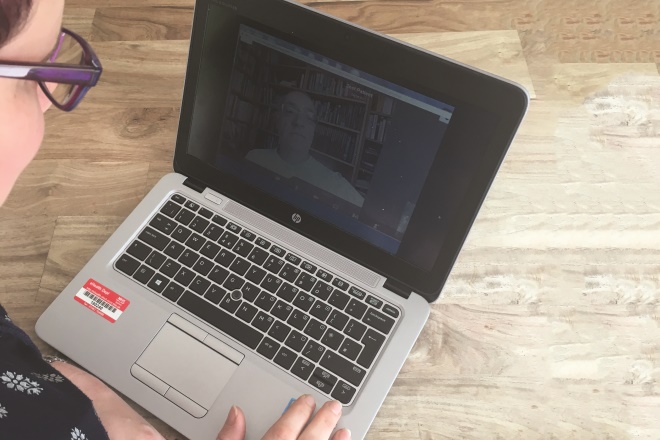
Source: Courtesy of Clare Morrison
‘Attend Anywhere’ is a web-based video consulting system that enables patients to have a consultation at home using an internet-connected computer or smartphone
Seeing the patient over the screen was incredibly useful, she says. “I could confirm which medicine a patient was talking about by simply asking them to show the packet to the camera.” She could also see how some patients organised and stored their medicines, while picking up non-verbal clues.
The review process found no untoward effects of the telehealth service; all the interventions made were comparable to the face-to-face service
The team reviewed each other’s work by going back into the patients’ notes three to six months later. Of 331 appointments, 4 interventions were required. “Occasionally, a medicine had to be restarted due to symptoms returning,” explains Morrison. “But the review process found no untoward effects of the telehealth service. All the interventions made were comparable to the face-to-face service.”
Pharmacy Anywhere is now integrated into NHS Highland’s pharmacy service for frail elderly patients, and pharmacists on the ground are seeing the benefits. “It cuts down my travel time, which brings more job satisfaction,” says MacRae.
Support for the service
Researchers at Robert Gordon University (RGU) in Aberdeen evaluated the service through post-consultation questionnaires and interviews with patients and members of the practice teams[2]
.
“Patients reported multiple benefits; for example, around the timing of their consultation, reduced travel and the review brought medication matters to their attention,” says Katie Gibson Smith, research fellow at RGU. “Some reported that they got a more in-depth review than with their GP and increased understanding of their medicines.” Patients were happy to recommend the service to others, says Gibson Smith.
It saved me going into the surgery, which is about eight miles away; and really I need to be with [my husband] most of the time
Many patients cited the convenience of not having to travel. “It saved me going into the surgery, which is about eight miles away; and really I need to be with [my husband] most of the time,” one patient told the researchers. “It has prevented not a long, but a difficult, awkward journey into the doctor,” said another.
Kenneth Kerr, practice manager at Assynt Medical Practice in Lochinver, Sutherland, one of the dispensing GP practices that took part, says the GPs were supportive of the scheme from the outset. “If anything, [the GPs] would have liked Yvonne [the pharmacist partnered with the practice] to have had further permissions on the system to enable her to complete other tasks in relation to the medication reviews,” he adds.
Aileen Bryson, practice and policy lead for Scotland at the Royal Pharmaceutical Society (RPS), says RPS Scotland is pushing for more patient-facing services, as opposed to paper-based medication reviews. “We are supportive of any modern technology that allows us to do that remotely,” she says. “It should be pharmacists conducting medication reviews and to achieve that in some parts of Scotland requires thinking outside the box.”

Source: Courtesy of Maree Todd
Maree Todd, pharmacist and member of the Scottish parliament for the Highlands and Islands region, says that the project is an excellent example of the creative thinking required to deliver healthcare services evenly across the region
Maree Todd, member of the Scottish parliament for the Highlands and Islands region, describes the project as an excellent example of the creative thinking required to deliver healthcare services evenly across the region.
I know that [Pharmacy Anywhere] will benefit my constituents and I’m absolutely delighted to see us leading the way in rural healthcare
As a pharmacist, Todd does not need convincing of the contribution pharmacy can make to patient care. “I know that [Pharmacy Anywhere] will benefit my constituents and I’m absolutely delighted to see us leading the way in rural healthcare.”
A sustainable solution
From April 2021, the Scottish government wants patients at every GP practice in Scotland to benefit from clinical pharmacy input through a new pharmacotherapy service. Pharmacists will manage all acute and repeat prescribing requests, along with all medicines reconciliation, and monitor all high-risk medicines. The new GP contract, which began in April 2018, also describes additional services to be run by pharmacists, such as resolving high-risk medicine problems, polypharmacy reviews and specialist clinics[3]
.
Health boards now have to figure out how to achieve these ambitious aims. Morrison has found her solution, at least in part, in telehealth.
The Scottish government is following the development of Pharmacy Anywhere carefully, and extending the reach of pharmaceutical care through telehealth is part of the strategy for pharmacy that it published in 2017[4]
.
“The evaluation of the Pharmacy Anywhere telehealth project will be important in terms of adding to our understanding of what will enhance access, and quality of service, for people living in remote and rural areas,” says Rose Marie Parr, Scotland’s chief pharmaceutical officer, “and, in the longer term, what elements might therefore be helpful in supporting service provision in other communities, including the pharmacotherapy service.”
Pharmacists and pharmacy technicians hold posts in around one-third of Scottish GP practices. Parr has indicated that the number of pharmacist training posts will increase from 170 to 200 per year from 2018–2019 to help deliver the pharmacotherapy service. But with just shy of 1,000 practices across Scotland, this will still leave gaps[5]
.
I’ve been approached by a lot of people [wanting to know] about Pharmacy Anywhere because, even in an urban setting, they think it could be the sustainability solution that they need
“There is a huge amount of work that’s going on in every health board in Scotland trying to work out how we do this,” says Morrison. “The biggest problem for us in rural Highland is pharmacist numbers — we are desperately short of them.”
“I’ve been approached by a lot of people [wanting to know] about Pharmacy Anywhere because, even in an urban setting, they think it could be the sustainability solution that they need,” Morrison adds. For example, when a pharmacist is off sick, remote cover can be provided quickly.
NHS Highland has calculated that one full-time pharmacist is needed per 5,000 patients registered at a practice. Many of the smaller practices have around 1,000 patients so a pharmacist’s caseload will inevitably cover multiple sites.
“If you’re going to send a pharmacist to each of these practices, that will take them … maybe three times the amount of time because there is so much driving that would need to be built-in,” says Morrison. “If they can provide that service remotely, it becomes really sustainable and a cost-effective way of doing it.”
Wider applications
Bryson can imagine wider applications for the technology. “For example, where we have a supply function from a community pharmacy and have perhaps a second pharmacist using telehealth to offer pharmaceutical care to those in more rural areas,” she says. “We are really supportive of this.”
Providing remote medication reviews from community pharmacies is something Morrison wants to explore. But capacity issues are a major stumbling block. “It’s a shame because I think there is an opportunity there,” says Morrison.
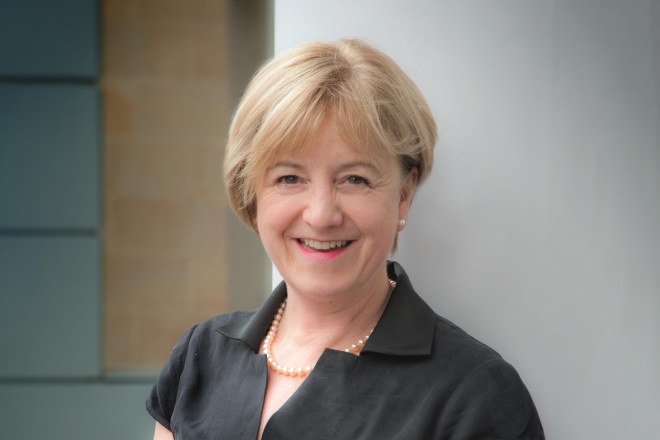
Source: Royal Pharmaceutical Society
Aileen Bryson, practice and policy lead for Scotland at the Royal Pharmaceutical Society (RPS), says RPS Scotland is supportive of technology that allows patient-facing services to be conducted remotely
Bryson also sees applications for Pharmacy Anywhere in locations that are not seen as remote. “When the beast from the east struck,” she says, referring to a period of severe cold weather that affected the UK in late February 2018, “some people couldn’t get to their normal workplace. Having this sort of technology in place as a way of working in future is something that we need to be thinking about.”
Telehealth services could also be extended to hospitals through the use of vending machines, suggests Bryson. “A pharmacist may be required to authorise the release of a medicine but isn’t actually on the premises — so a face-to-face video link could be used to facilitate that authorisation and then the medicine can be released.”
This project demonstrates how successful you can be when using technology, which can be easily integrated with existing IT systems and the value of learning from tests of change
Bryson acknowledges that some regulations may need to change to accommodate these ways of working — and they may be controversial. “But these things can be done,” she assures.
The Pharmacy Anywhere telehealth approach is “entirely replicable” in other settings, says Jo Evans, senior improvement advisor at Haelo, an NHS innovation and improvement science centre. “This project demonstrates how successful you can be when using technology which can be easily integrated with existing IT systems, and the value of learning from tests of change.”
But Evans sees the lack of good-quality broadband services in rural areas as a major barrier for health providers seeking to use technology to provide better care to patients. “This is a challenge for governments: to progress rural broadband connectivity,” she says.
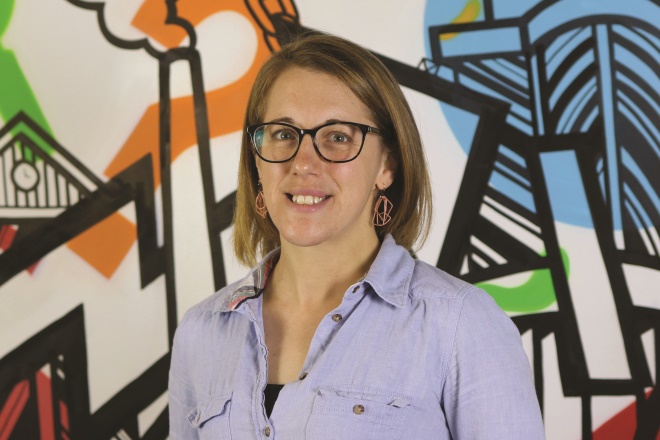
Source: Courtesy of Jo Evans
Jo Evans, senior improvement advisor at Haelo, an NHS innovation and improvement science centre, says that the Pharmacy Anywhere telehealth approach is “entirely replicable” in other settings
“It’s about investment and the basic infrastructure,” adds Hazel Archer, video conferencing lead for the Scottish Centre for Telehealth and Telecare’s technology enabled care programme. Archer says that the Scottish government is working to address the problem, for example, by laying fibre-optic cable along the west coast of Scotland.
Beyond pharmacy: NHS Near Me
The response from patients to Pharmacy Anywhere (see Panel 1) prompted NHS Highland to create NHS Near Me, a service that uses telehealth to provide NHS appointments as close as possible to patients’ homes. Initially, it will focus on outpatient appointments for people who have to travel from Caithness to Inverness, but the aim is to offer telehealth solutions across all services in NHS Highland. Appointments will be provided by telephone, by video appointment at home, or by video appointment at a local NHS facility. “In every case, the aim is to avoid unnecessary travel,” says Morrison.
But telehealth has further advantages. It delivers resilience to services and enables pharmacists to work remotely, reducing the need for long journeys and increasing job satisfaction.
“Pharmacy Anywhere is so much part of what we do now,” says Morrison. “It astonishes me that two years ago we weren’t doing this, because it’s actually so simple.”
Panel 1: Are patients ready for telehealth?
Researchers at Robert Gordon University (RGU) explored patients’ perceptions around remote consultations through 10 patient interviews and questionnaires returned by 34 patients who had completed a Pharmacy Anywhere appointment.
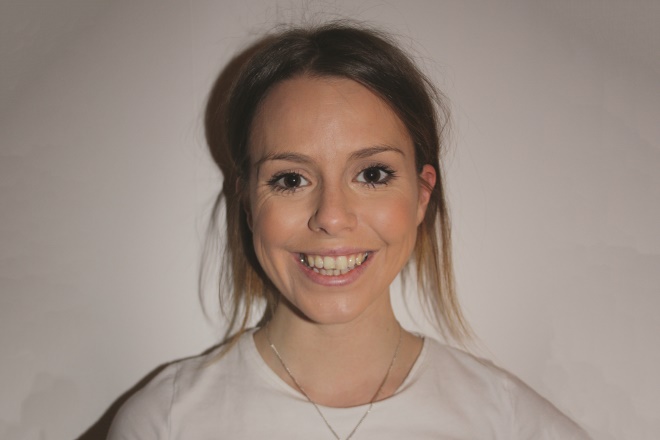
Source: Courtesy of Katie Gibson Smith
Katie Gibson Smith, research fellow at Robert Gordon University, says that some participants reported that they got a more in-depth review than with their GP and increased understanding of their medicines
“[Patients] were open to using [the telephone] for future medication reviews and thought that it was an appropriate method,” says Katie Gibson Smith, research fellow at RGU.
One patient told the researchers: “They have the information they need and that is not necessarily enhanced by me sitting next to them or having travelled to see them.”
Another said they preferred face-to-face consultations but acknowledged that speaking over the telephone was “way, way, way more convenient than a normal consultation”.
The patients who chose the telephone over a video call did so mainly because they weren’t comfortable using video technology or because of limited broadband capability.
“One of the major stumbling blocks that we came across was patients’ understandable lack of confidence in the electronic technology,” says Kenneth Kerr, practice manager at Assynt Medical Practice in Lochinver, Sutherland.
Patients were offered the choice of coming to the practice if they did not have a suitable internet connection at home, but most opted for telephone consultation.
“I am not into computers — I am too old for that nonsense,” one patient told the researchers. “The bandwidth is pretty slow so there is no virtue in [a video consultation] for me,” said another.
Panel 2: Other areas trialling telehealth
An early telepharmacy project originated from North Dakota State University College of Pharmacy in 2002 to prevent rural pharmacies from closing across the state[6]
. A pharmacist at a central pharmacy site supervises a registered pharmacy technician at a remote telepharmacy site through the use of video conferencing technology.
In California and Woolloongabba, Australia, models for conducting remote medication reviews have been developed and tested[7],[8]
. And in North Carolina, a telehealth team providing care for patients with diabetes included a pharmacist as part of the multidisciplinary team[9]
.
Telehealth technology is also being used to support medication adherence, disease monitoring, symptom management and to collect patient experience data[10]
. In Barcelona, Spain, a multidisciplinary, homecare telemedicine intervention was developed to provide management of chronic HIV to patients[11]
.
References
[1] General Medical Council. Good practice in prescribing and managing medicines and devices: remote prescribing via telephone, video-link or online. 2013. Available at: https://www.gmc-uk.org/ethical-guidance/ethical-guidance-for-doctors/prescribing-and-managing-medicines-and-devices/remote-prescribing-via-telephone-video-link-or-online (accessed August 2018)
[2] The Health Foundation. Innovating for Improvement: Pharmacy Anywhere — NHS Highland. 2018. Available at: https://health.org.uk/programmes/innovating-improvement/projects/pharmacy-anywhere (accessed August 2018)
[3] Scottish government. The 2018 GMS contract in Scotland. 2017. Available at: https://www.gov.scot/Publications/2017/11/1343/downloads (accessed August 2018)
[4] Scottish government. Achieving excellence in pharmaceutical care: a strategy for Scotland. 2017. Available at: https://www.gov.scot/Publications/2017/08/4589 (accessed August 2018)
[5] ISD Scotland. GP workforce & practice populations. 2017. Available at: http://www.isdscotland.org/Health-Topics/General-Practice/Workforce-and-Practice-Populations/ (accessed August 2018)
[6] North Dakota State University. Telepharmacy. 2018. Available at: https://www.ndsu.edu/telepharmacy/ (accessed August 2018)
[7] Cole SL, Grubbs JH, Din C et al. Rural inpatient telepharmacy consultation demonstration for after-hours medication review. Telemedicine and e-Health 2012;18(7):530–537. doi: 10.1089/tmj.2011.0222
[8] Freeman CR, Peel NM, Watts JN et al. Development of a protocol for telehealth residential medication management reviews to enable collaboration of pharmacists and geriatricians. Journal of Pharmacy Practice and Research 2017;47(2):153–157. doi: 10.1002/jppr.1335
[9] Nye AM. A clinical pharmacist in telehealth team care for rural patients with diabetes. North Carolina Medical Journal 2017;78(3):183–184. doi: 10.18043/ncm.78.3.183
[10] Badowski ME, Michienzi S & Robles M. Examining the implications of analytical and remote monitoring in pharmacy practice. Clinical Pharmacist 2017;9(6):184–192. doi: 10.1211/CP.2017.20202516
[11] León A, Cáceres C, Fernández E et al. A new multi-disciplinary home care telemedicine system to monitor stable chronic human immunodeficiency virus-infected patients: a randomized study. PLoS One 2011;6(1):e14515. doi: 10.1371/journal.pone.0014515


